 |
October 2025
|
 |
 |
Updating the Digital Garden
We’re happy to report that after a month back, restoration efforts have been going strong. The efficiency of texasinvasives.org is at an all-time high, and connection errors have been left to wilt with the compost. Many of our existing invasive species pages have been seeded, fertilized, and refreshed. As clean-up continues throughout our digital garden, dead links are being pruned, while fresh ones are planted in their place. A clean new look is taking root, and we’re excited to see something vibrant bloom from it.
Our next round of plantings includes:
• Post missing iWires
• Add new Invasive Species pages
• Update resources and materials
• Add new content, links, pages, and more
Like any good restoration project, this will take time, but we’re committed to making it as seamless as possible. Please excuse any mess as we replant and till the garden. If you notice any website glitches or broken branches (not already marked “in progress”), please let us know — extra eyes are always appreciated.
Thank you for your patience, support, and curiosity. We couldn’t do this without you.
|
|
 Credit: KNKleiner Credit: KNKleiner
|
 |
 |
|
 |
 |
What do the Tweets Say?
Public outreach, education, and support are critical for conservation efforts to be successful. Sometimes it is difficult for organizations to recognize the gaps between public attention and scientific priorities. A recent study utilized the common social media platform, Twitter (now rebranded as X), to analyze how public discourse favors invasive species. What resonates most with the public?
Researchers found that stories involving charismatic invasive animals combined with interest or dramatic narratives trend the most. As an example, public opinion regarding the population control of Pablo Escobar's hippos in Colombia proved strong enough to halt management efforts. Public support grew so much that, following a federal court order, The hippos are now recognized as people or “interested persons” with legal rights in the US. Although this has no legal impact in Colombia, it is the first time in the US an animal has ever been granted legal rights.
Alternatively, non-charismatic yet scientifically and environmentally relevant invasive species were found to generate the least public engagement. This was especially true of plants, almost to the point that public discourse displayed what ecologists call ‘plant blindness.’ This could be due to a perceived lack of attraction or general interest in plants. Some of the most troublesome invasives species are plants, which consequently receive very little management support or conservation funding.
Researchers also found that 60% of retweeted content about invasive species was originally provided by 1% of users. These influential few include The New York Times, government agencies, invasive biology experts, reputable news sources, and a few social media influencers.
These findings could help organizations better communicate and engage with the public. Unfortunately, replicating this research methodology again may no longer be possible due to the recent rebranding and ownership changes at Twitter. Within 6 months of these changes, nearly half of the environmentally focused accounts have become inactive. Some fear that Twitter’s (or X’s) evolving data policies could compromise conservation research since losing access to this kind of data is greatly limiting scientists’ view of public perception. The patterns identified in this research have important implications for conservation communication and policy.
Public discourse for the study was accessed from Twitter’s (then free) Academic Research API. Over 500,000 tweets posted between 2006 and 2021 containing the term “invasive species” were analyzed.
Read the research: Canavan et al., 2025
|
|
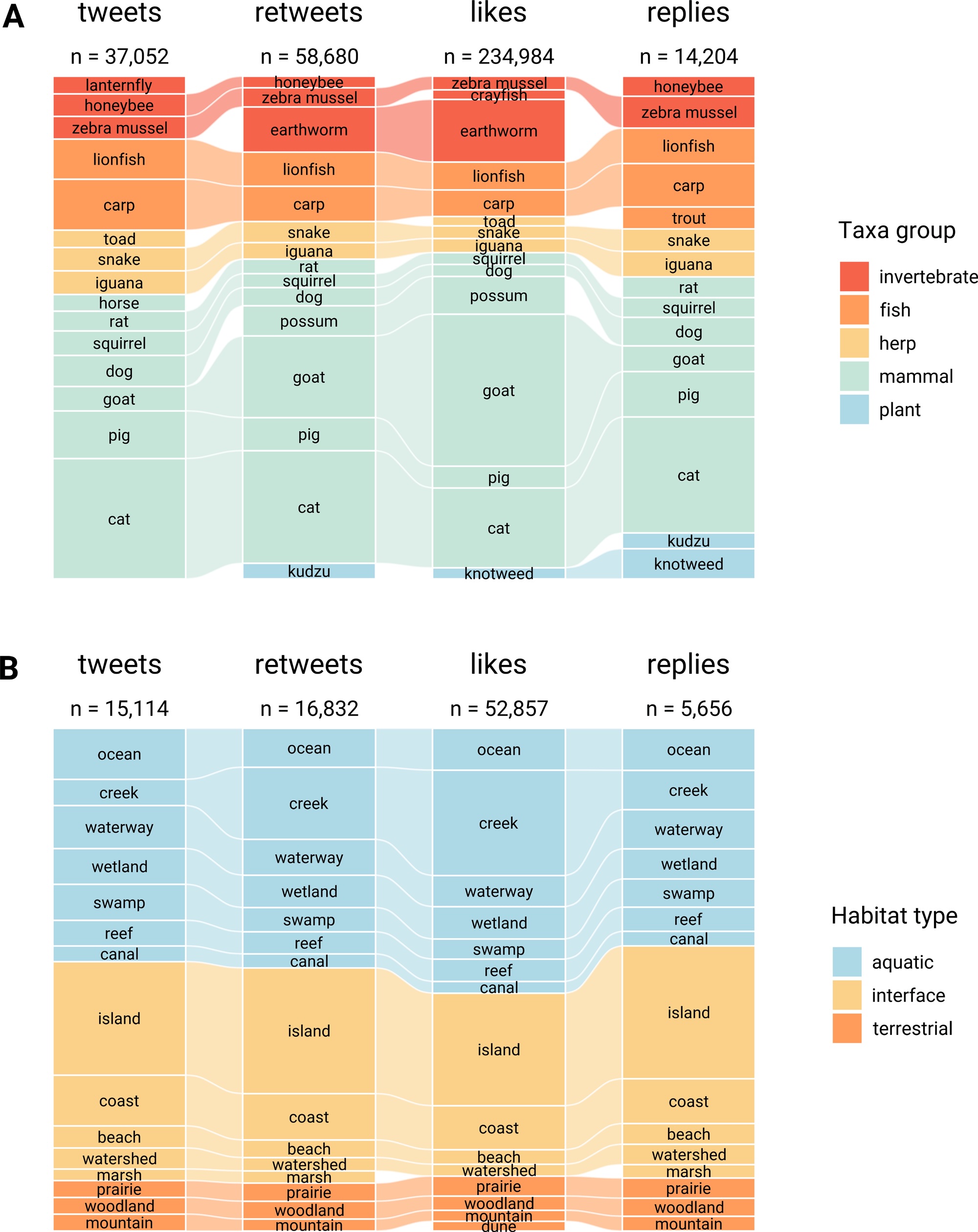 Sankey plot depicting the top 15 taxa (A) and habitats (B) mentioned in the context of invasive species on Twitter, classified by their interactions (tweets, retweets, likes, replies). Credit: Canavan et al., 2025 Sankey plot depicting the top 15 taxa (A) and habitats (B) mentioned in the context of invasive species on Twitter, classified by their interactions (tweets, retweets, likes, replies). Credit: Canavan et al., 2025
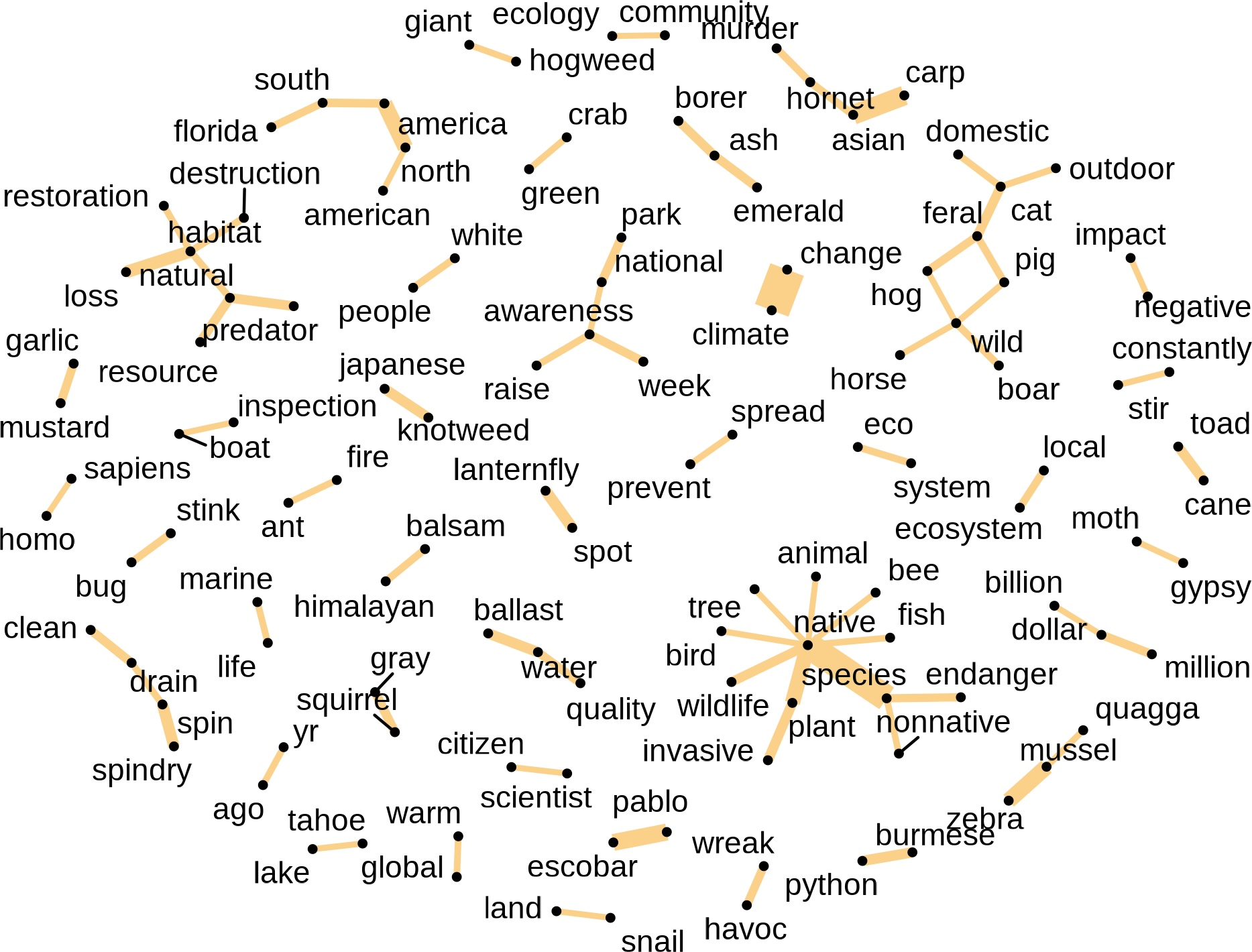 Bigram network plot of top co-occurring words within Tweets containing the term “invasive species.” The thickness of the orange lines connecting the words indicates their frequency of use, with thicker lines denoting higher numbers of tweets. The term “invasive species” has been excluded from the network. Credit: Canavan et al., 2025. Bigram network plot of top co-occurring words within Tweets containing the term “invasive species.” The thickness of the orange lines connecting the words indicates their frequency of use, with thicker lines denoting higher numbers of tweets. The term “invasive species” has been excluded from the network. Credit: Canavan et al., 2025.
|
 |
 |
|
 |
 |
Don’t Mess With Texas Citrus
TISI is offering FREE diagnostic services if you suspect your citrus has either the psyllid pest or the Citrus Greening pathogen, or you would like your citrus plants to be part of our screening survey.
The Asian citrus psyllid (Diaphorina citri) and the Citrus Greening pathogen (Candidatus liberibacter asiaticus) are threatening citrus in multiple Texas counties. By taking samples and monitoring the spread, it is easier to ensure that you and your neighbors are not affected. This pest and pathogen are extremely detrimental to Texas citrus, both economically and agriculturally. The presence of either can greatly affect citrus yield.
If you are interested in having your citrus trees checked or being part of the survey, please contact invasives@shsu.edu. If you are located within 200 miles of our headquarters, we can collect samples and/or provide traps and monitoring services. Otherwise, we will send you easy step-by-step instructions so you can do it yourself. Not only will we share the results and management strategies (where applicable), but you will become part of a multi-county monitoring survey that is striving to improve the health of Texas citrus!
Also Available: TISI offers educational workshops that highlight information about the Asian citrus psyllid, the pathogen Citrus Greening, and what you need to look out for in your own backyard. If you are interested in this, TISI will provide trapping materials, assist with management strategies, and more. Don’t waste another second. Help us stop the spread!
|
 |
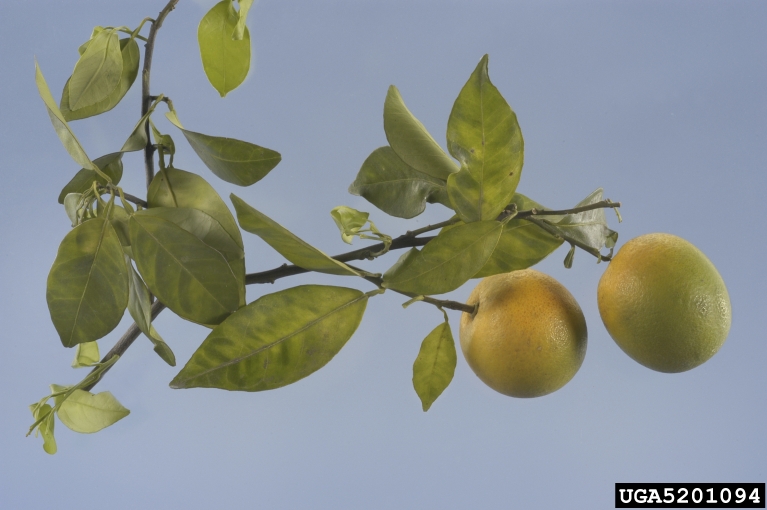
Symptoms of citrus greening bacterium. Credit: Jeffrey W. Lotz, Florida Department of Agriculture and Consumer Services, bugwood.org
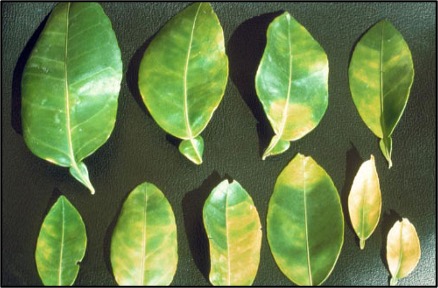
Leaf mottle on grapefruit, a characteristic symptom caused by citrus greening bacterium but also seen on trees infected by Spiroplasma citri. Credit: J.M. Bove.
|
 |
 |
|
 |
 |
North American Invasive Species Management Association Training Webinars
This program is designed to provide the education needed for professionals and students who are managing or learning to manage invasive species. The courses include the most current invasive species identification, control, and management techniques, and how to comply with local and federal regulations.
Participants may register and enroll at any time, and will receive a certificate of invasive species management from NAISMA upon completion of the program.
All live webinars are open to the public. Recorded webinars are available to members of NAISMA.
NAISMA 2025 Webinar Schedule:
- November 19, 1pm CST- Harnessing AI for Invasive Species Detection: Smart Traps, Drones, and Machine Learning in Action. REGISTER
- December 17, 1pm CST- Biocontrol Allies: Managing Spotted Lanternfly and Tree-of-Heaven. REGISTER.
|
|
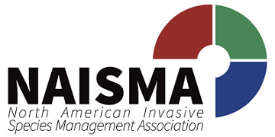
|
 |
 |
|
 |
 |
Mini-Series Monthly Webinars
Don’t miss an all-new mini-series of webinars exploring the many ways invasive species can impact your local community and its ecosystem. Discover what you can learn—and what actions you can take—to prevent, manage, and respond to these ecological threats.
A new video will be available the first Wednesday of each month until the end of the year. This series is FREE and open to the public. Advance registration is required. All webinars will be recorded and posted to the University of California YouTube channel after each webinar.
November 5, 2025 – Weeds, Wildlands, & Wildfires
Invasive plants can invade wildlands, reduce biodiversity, reduce recreational opportunities, and increase the risk of wildfires. REGISTER for a free webinar that shares information about the impacts of invasive weeds and how they are managed in California.
|
|
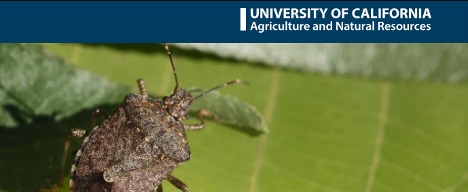 Credit: University of California Agriculture and Natural Resources. Credit: University of California Agriculture and Natural Resources.
|
 |
 |
|
 |
 |
Invasive Mussel Watch
Texas Parks and Wildlife has recently designated Fort Phantom Hill Lake, near Abilene, TX, as “positive” for invasive zebra mussels (Dreissena polymorpha). A positive designation signifies zebra mussels have been detected multiple times, but additional evidence is needed to determine if the population is fully established (i.e. has become successfully reproduction).
To date, a single adult zebra mussel and two microscopic veliger larvae have been detected in the same approximant area of Fort Phantom Hill Lake. After an extensive survey, no additional areas showed evidence of infestation. Authorities believe the invasion is recent and in its early stages. As a precautionary measure, increased monitoring and inspections of the intake structures will begin so that proactive and targeted actions can be taken before zebra mussels establish a reproductive population.
TPWD authorities emphasize how important it is for the general public, anglers, boaters, and waterfowl hunters to Clean, Drain and Dry all boats and watercraft equipment before leaving one lake and visiting another. It is essential to remain vigilant and work together if we wish to Stop the Spread of aquatic hitchhikers. If you believe you have seen zebra or quagga mussels, please REPORT IT! here. If you believe you have seen any other aquatic invasives, please email invasives@shsu.edu.
TPWD Press Release
|
 |
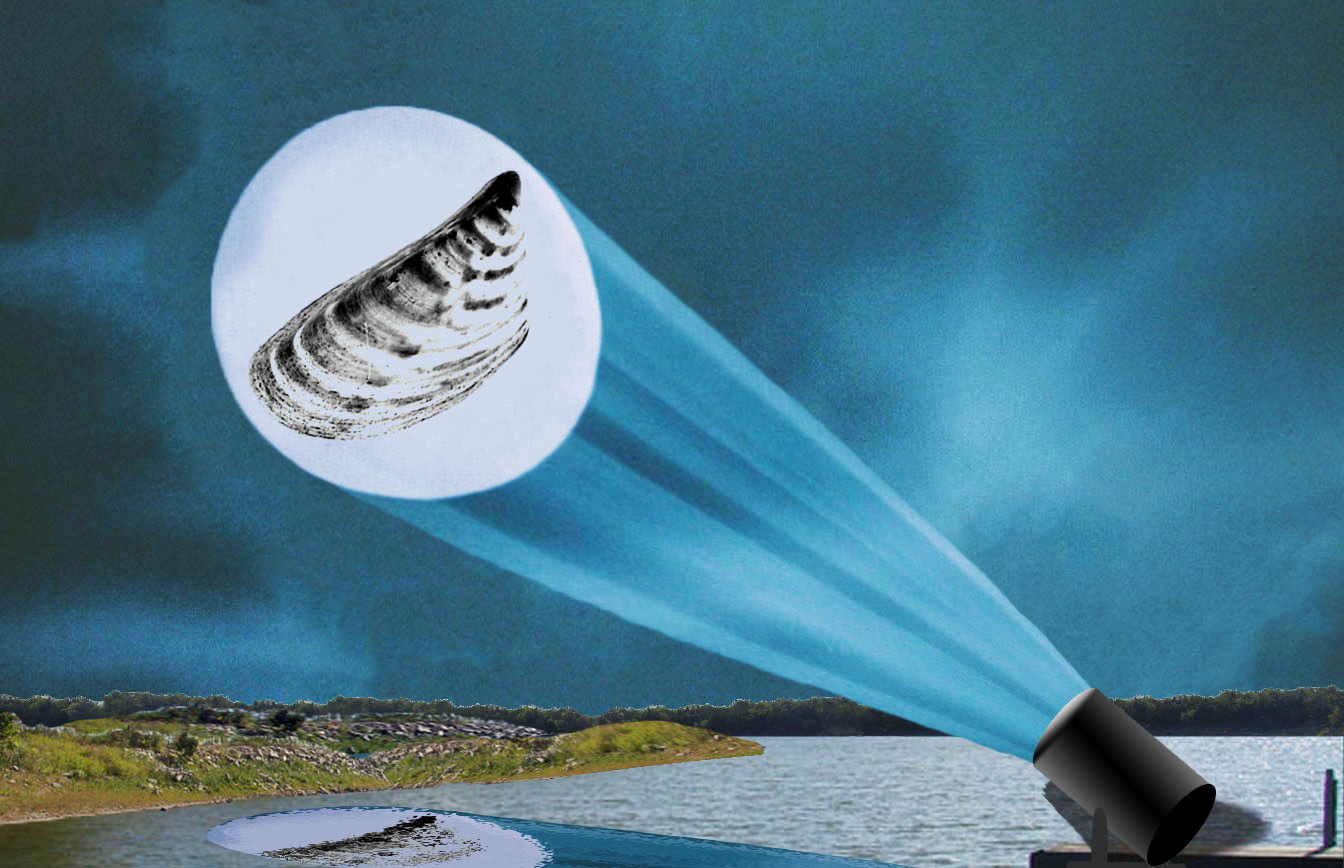 Credit: KNKleiner Credit: KNKleiner
|
 |
 |
|
 |
 |
|
 |
 |
|
 |
 |
Invasive Spotlight:
Citrus Canker
(Xanthomonas citri citri)
Citrus canker (Xanthomonas citri citri) is a bacterium known to cause lesions on the fruit, leaves, and stems of citrus host plants. Leaf lesions typically found on the underside of the leaf and present in three stages: 1) concentric circles surrounded by a yellow halo; 2) cork-like color with a volcano-like point where the lesions will eventually penetrate both sides of the leaf; and 3) dark brown to black. Fruit lesions appear in a similar manner; however, the halo is often difficult to see once the fruit is ripe. When the lesion develops a cork-like texture with a volcano-like point, the center may crack to show a crusty brown sugar-looking material inside.
Citrus canker is predominantly spread by contaminated soil, equipment, and infected plant material or fruits. The bacteria can also be spread through wind or rain, which can make it difficult to eradicate. The multiple avenues of spread underscore the importance of Citrus Canker quarantines.
The Texas Department of Agriculture has placed Brazoria, Fort Bend, Galveston, and Harris County, TX under a citrus canker quarantine. This invasive bacterium has also been reported in AL, FL, LA, and SC. It is vital to report any signs of infection, destroy any infected trees on your property and thoroughly clean any equipment that comes in contact with an infected tree.
If you think you seen citrus canker and REPORT IT! to invasives@shsu.edu. Please include a photo, a description, and the location. For more information about the citrus canker, see the TexasInvasives.org species page. Citizen Scientist reports are fundamental to early response efforts. We appreciate your diligence and dedication.
|
 |
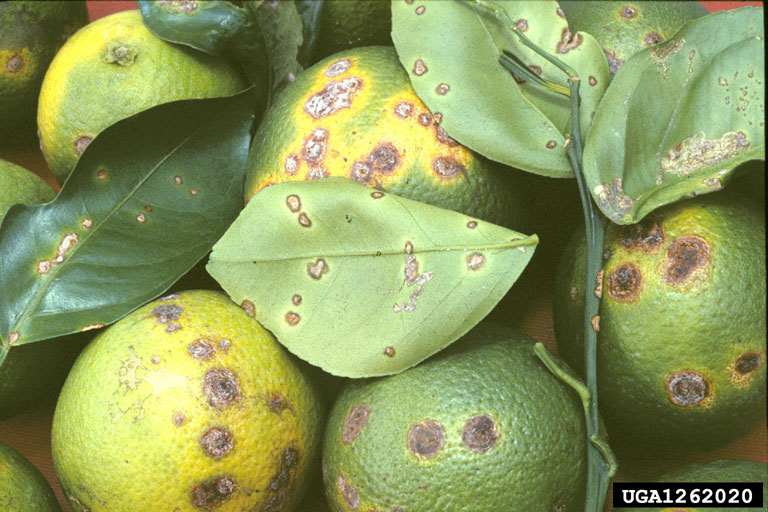
Citrus canker ( Xanthomonas citri citri) on valencia orange fruit, leaf, and stem. Credit: Timothy Schubert, Florida Department of Agriculture and Consumer Services, Bugwood.org
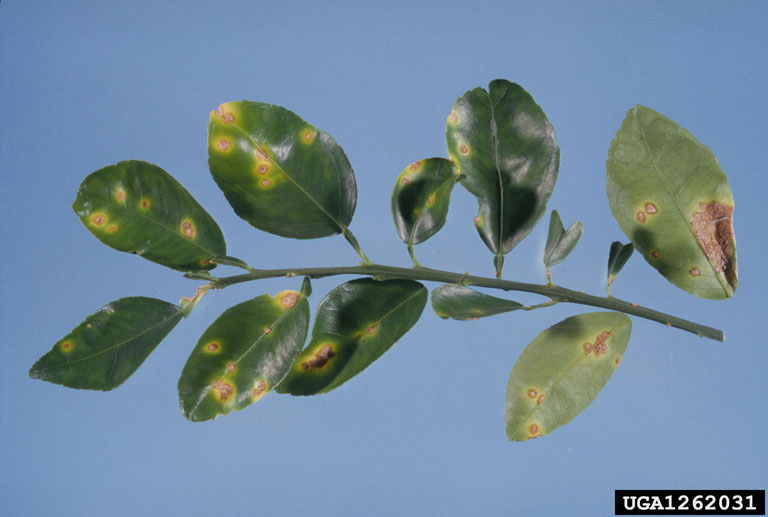
Leaf lesions. Credit: Jeffrey W. Lotz, Florida Department of Agriculture and Consumer Services, Bugwood.org
|
 |
 |
|
 |
 |
Video Invasion
Enjoy monthly videos about invasive species and/or people willing to teach us more about them. There are some amazing citizens and professionals around the world that poke, prod, chase, dive, and investigate everything they can about these alien invaders. Jump into this cinematic rabbit hole. You never know what new wonders you may discover.
How one city is fighting invasive species. CBC News.
A growing population of emerald ash borers (EAB, Agrilus planipennis) threatens to kill ash trees across their entire city in the next 15 years. See how experts are vaccinating trees to help protect them from this invasive pest.
Biology Ph.D. Student Daley O’Keefe on Invasive Fire Ants Research. Clark University.
See field science in action. Watch a biology Ph.D. student and her fellow students perform multiple survey techniques popularly used to collect insect specimens. This video is a wonderful example of data collection in raw form, before it’s all brough back to the lab.
Tool Talk: Identifying Invasive Species Range Shifts. Northeast Climate Adaptation Science Center.
This talk brings researchers and practitioners together to share many of the impressive invasive management tools that are currently available and how they have evolved over time. Learn what makes a good management tool, how to select the right tool(s) for each task, and see the tools developed for the climate adaptation community.
|
 |
 |
|
 |
 |
More News
Coastal Bend Bays & Estuaries Tackles Invasive Species at Sunset Lake Park in Portland
As part of a restoration project, salt cedar (Tamarix ramosissima) and white lead trees (Leucaena leucocephala) will be removed in five stages. This will include cutting, manual removal, and on-site mulching to create enough space for native plants to reestablish themselves. kristv.com
Global Study Reveals Tempo of Invasive Species' Impacts
The introduction of an invasive species to an ecosystem does not cause a uniform change over time. Instead, the ecosystem often experiences both persistent and intense changes as well as tapered, fading changes with time. phys.org
Pearland Park Piranha May Be Just the Beginning: Invasive Species in Texas Waters on the Rise
A red-bellied piranha (Pygocentrus nattereri) was caught in a lake near Pearland. Luckily, this is only the second time this non-native has been reported in Texas. These fish are illegal to buy and own in this state- even if they are available online. houston.culturemap.com
Lake Austin Business Owners Push City Leaders to Drain the Lake to Stop Hydrilla
Hydrilla (Hydrilla verticillata)has returned to Lake Austin, and the spread shows no signs of stopping. Past infestations were treated by stocking the lake with sterile grass carp, which eat hydrilla. This time around, Friends of Lake Austin are asking for the water level to be dropped, as it has worked in the past. kxan.com
Texas A&M Agrilife Develops Guide to Manage Feral Hogs in National Parks
Researchers have developed a decision-making guide for monitoring, managing, and controlling feral pig (Sus scrofa) populations that can be tailored to any park nationwide. The guide will be pilot tested soon. agrilifetoday.tamu.edu
Future-focused conservation index identifies reptiles as highest conservation priority.
Reptiles could be the primary focus of future conservation efforts due to how vulnerable populations have become due to climate change, habitat loss, and invasive species. These factors could be driving reptiles to extinction or critical levels faster than other species. phys.org
An Innovator in Pest Control Has Her Sights on Invasive Species
A startup, called Invasive Species Corp., is developing eco-friendly herbicides and biological ways to tackle non-native and invasive species as an alternative to harmful chemicals. thestoryexchange.org
Americans, Canadians unite in battling 'eating machine' carp
Asian carp continue to spread and eat, consuming up to 40% of their body weight. Authorities on both side of the boarder are banding together to stop the fishes before they reach the Great Lakes. phys.org
Explosive Expansion of Invasive Marsh Frogs Found
The marsh frog (Pelophylax ridibundus) is encroaching upon the southern and eastern part of the Netherlands that is naturally occupied by two other green frog species. This intrusion has led to increased competition, spread of disease, and hybridization. universiteitleiden.nl/en/news
AI And Citizen Science Reveal Potential First Detection of Invasive Malaria Mosquito in Madagascar
Researchers have used artificial intelligence and citizen science to identify Anopheles stephensi, an invasive mosquito species known for carrying malaria. This may be the first specimen ever detected in Madagascar. phys.org
|
 |
 |
|
 |
 |
Sentinel Pest Network and Invaders of Texas Workshops
Invaders of Texas workshops train volunteers to detect and report invasive species as citizen scientists. Workshops, which are free, are designed to introduce participants to invasive species and the problems they cause, cover aspects of invasive species management, teach identification of local invasive plants, and train participants to report invasive plants using the TX Invaders mobile application. The workshop is 7 hours long (usually on a Saturday, but scheduling is arranged with each individual host group). The workshop satisfies Master Naturalist training requirements.
Sentinel Pest Network workshops serve to increase the awareness and early detection of a set of particularly important invasive species to help prevent their spread into Texas or their further spread within Texas. Participants learn to identify species such as the Emerald Ash Borer, Cactus Moth, Asian Longhorned Beetle, and other pests of regulatory significance, and to report them. The workshop is 3.5 hours long. The workshop satisfies Master Naturalist training requirements.
Upcoming Workshops:
November
HOST: Port Aransas Cooperative Weed Management Area
Invasive Species of Port Aransas presented by TISI
November 15, 2025 9am-1pm
Location: TBD in Port Aransas
CONTACT: Zoe Ruben, zoe.ruben@austin.utexas.edu
January
Invasive Species of Central Texas
Heart of Texas Master Naturalists
January 22th, 2025 6-8pm
Location: East Waco Library
CONTACT: Cari Spiares – crspiares@yahoo.com
CITRUS WORKSHOPS: Stay tuned for upcoming 2023 virtual weekend presentations about Citrus diseases and FREE testing we offer at Texas Invasive Species Institute.
|
|
 |
|












 Credit: University of California Agriculture and Natural Resources.
Credit: University of California Agriculture and Natural Resources.

